How 'Lady in the Lake' and 'Under the Bridge' Explore Our Own True Crime Obsession
Both the Apple TV+ show and the Hulu miniseries examine who can tell victims’ stories—and inherently consume them.
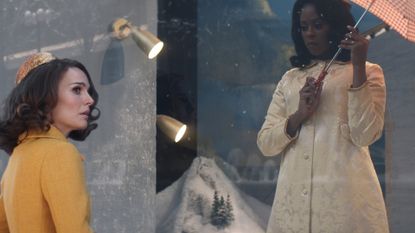
What if your breakthrough success resulted from a tragedy within your community? Maddie Morgenstern (Natalie Portman) faces this ethical conundrum in the Apple TV+ limited series Lady in the Lake. Set in 1966, two different murders in her Baltimore neighborhood inspire Maddie to make a bold leap from a dissatisfied housewife to an intrepid reporter. But in this adaptation of Laura Lippman's 2019 bestseller of the same name, showrunner Alma Har'el never positions Maddie as a flawless hero driven by selfless reasons on a quest to break the glass ceiling. Rather, Maddie's insatiable drive to crack a whodunnit reflects society’s true crime fascination that begins as newspaper headlines and evolves into books and now thrives across pop culture.
It’s in many ways like Hulu's Under the Bridge, one of this year’s true crime hits, which aired just several months before Lady in the Lake premiered on July 19. The series, starring Riley Keough and Lily Gladstone, similarly depicts how ambition, a writer reckoning with trauma from their past, and a horrifying act of violence intersect. In both series, too, exploration of who becomes a crusading voice for the victim—or even a messenger for the accused—doubles as examining the knotty crime-as-entertainment relationship.
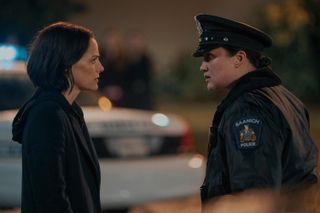
Rebecca Godfrey (Riley Keough) and Officer Cam Bentland (Lily Gladstone) confront one another in Under the Bridge.
Various think pieces and reports have been published trying to understand why women in particular are drawn to the true crime genre, in which the victims are frequently women. (The Saturday Night Live sketch "Murder Show" hits the nail on the head.) But what makes Lady in the Lake and Under the Bridge stand out is how concepts of girlhood and womanhood are a recurring motif in the depictions of the victims, investigators, and, in the case of Under the Bridge, the aggressors. Taking this feminized approach allows room for layered and complex depictions, and, notably, humanity (and even agency) is given to the deceased and the living. Each protagonist is not let off the hook regarding their failures, nor are they vilified. Exploring the moral gray area is a signature of Ha'rel’s. “I think that in everything I do—and I wish the whole world was capable of this—the goal is to humanize every experience, and not just find out who’s right and who’s wrong,” she recently told Variety.
Getting close to the alleged killer while covering a story is a common narrative choice. However, Lady in the Lake and Under the Bridge purposefully explore the push-pull of how the victim can get lost amid the noise of the living. Whereas Lady in the Lake is inspired by disparate media coverage of two unrelated disappearances in '60s Baltimore with an invented protagonist, Under the Bridge is adapted from Rebecca Godfrey's 2005 non-fiction book detailing events surrounding the 1997 murder of teenager Reena Virk. Rather than entering the scene after the arrests, creator Quinn Shephard and showrunner Samir Mehta ensure that Rebecca (Keough) is in the eye of this investigation storm as it unfolds. Each title utilizes a fragmented sense of time and place, toggling back and forth to illustrate the layers of history that led to current circumstances.
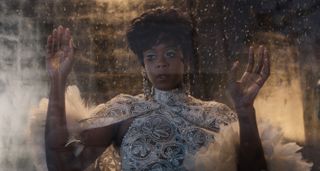
Cleo Johnson (Moses Ingram) modeling in a department store.
From its opening sequence, Lady in the Lake teases the body disposal that eventually plays out at the end of episode 4 (which hit streaming on August 2). Cleo Johnson's (Moses Ingram) initial voiceover makes no secret that she is the future woman in the lake. Serving as the narrator, Cleo's distaste toward Maddie's reporter-savior positioning is clear: "You said you knew who took my life from me, Maddie Morgenstern. You said no one cared until you came along. Truth is, you came at the end of my story and turned it into your beginning." Questioning Maddie's intention from the jump sets the tone, and guarantees audiences question her agenda throughout the season. It also signifies that Lady in the Lake has no interest in offering some sort of girlboss twist on history; racism, antisemitism, and sexism provide the undercurrent Cleo and Maddie swim in.

Maddie Morgenstern (Natalie Portman) has a meeting at the Baltimore Star in Lady in the Lake.
Far from living out a His Girl Friday fantasy of playful newsroom banter, Maddie has to claw for a mention in an exclusive story in the Baltimore Star which she facilitated with murder suspect Stephan Zawadzkie (Dylan Arnold). Despite her small credit, Maddie positively beams at her big break during the Hanukkah festivities. That is until Tessie's father (and Maddie's high school ex) Allan (David Corenswet) angrily confronts her and accuses her of doing “whatever it took to” get her name in print, “even if it meant drumming up sympathy for the murderer." Allan vibrates with rage, his comments fueled by raw grief, while Maddie harbors unfinished business with her ex.
Rather than slink away when Allan demands she leave, Maddie insists her only agenda is to find out what happened to Tessie. Not that Allan agrees: "Everybody here knows the truth. You're trying to recover your lost dreams, and you want to use the body of my dead child to do it," he spits with fury. Maddie's teenage son Seth (Noah Jupe) even sides with Allan, but her actions read as naive more than calculated. Everyone contains multitudes in these narratives, with Maddie swinging between exploiting others and being exploited. As a viewer, you may even see yourself in Maddie: wanting justice for the victim (fictitious or otherwise), and still wanting to consume the gory and salacious nuggets of information within these stories.
Stay In The Know
Marie Claire email subscribers get intel on fashion and beauty trends, hot-off-the-press celebrity news, and more. Sign up here.
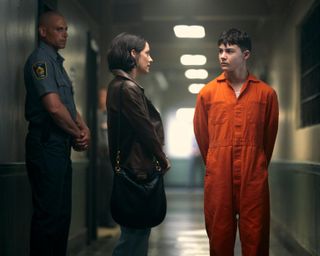
Rebecca (Keough) visits Warren (Javon Walton) in prison.
Nowadays, citizen detectives who pour over every detail of a case as it unfolds on TikTok and Reddit aren't unlike Maddie and Rebecca. But as those 21st-century platforms weren't an option for the characters, they instead become the voices of the victims and suspects through their research and reporting. Whereas Maddie finds freedom from being boxed in as a homemaker through Tessie's murder, in Under the Bridge, Rebecca confronts a past tragedy through her interactions with one of the accused killers, Warren (Javon Walton). Their kinship explores notions of punishment and forgiveness, and while Rebecca does lose sight of Reena at times, the series never does.
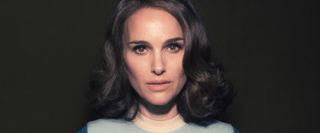
Maddie (Portman) looks straight into the camera, inherently at the viewer.
With that, it's as if TV is finding its footing in how to more thoughtfully cover crime stories that we can't look away from. Even when the pacing of the shows stumble under the weight of these different perspectives, it is a better series for showcasing each vantage point. This approach remains a consideration until the Hulu series’ very end: When the court case wraps, Rebecca is forced to confront her involvement and how the outcome has given her material for a book. While executed differently in Lady in the Lake, as the show plays out, Cleo's life has depth and shading, and the continuing voiceover ensures she will be more than how Maddie molds her to get ahead at the newspaper. The creators of these shows are done with thinly painted victims, proving that storytellers like Rebecca and Maddie need to give as many words and attention to Reena, Tessie, and Cleo as those accused of harming them. In doing so, they hold a mirror up to our fascination with the macabre and make witnesses of us all.
Emma Fraser is a freelance contributor to Marie Claire. A reporter and critic with 15 years of experience, she covers television and movies, with a specialty in costume design and TV history. From the moment Emma first watched The X-Files, My So-Called Life, and E.R., she wanted to pull back the curtain of this industry. Emma has bylines at The Daily Beast, Backstage, IGN, Elle, Town & Country, Vulture, Thrillist, Little White Lies, and other outlets.
-
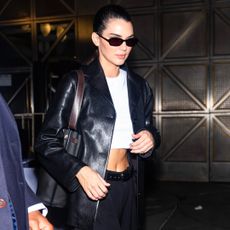 Kendall Jenner Makes Her Anticipated NYFW Return
Kendall Jenner Makes Her Anticipated NYFW ReturnShe's an Alaïa girl.
By Danielle Campoamor Published
-
 Rihanna Treats New York Fashion Week to Two Surprise Appearances
Rihanna Treats New York Fashion Week to Two Surprise AppearancesWe're not worthy!
By Danielle Campoamor Last updated
-
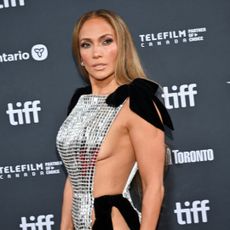 Jennifer Lopez Debuts Squeaky Clean Soap Nails
Jennifer Lopez Debuts Squeaky Clean Soap NailsHer "mannequin manicure" is bound to take over.
By Samantha Holender Published
-
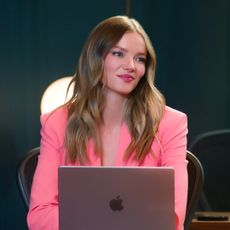 What to Know About 'Selling Sunset' Season 8 Star Alanna Gold
What to Know About 'Selling Sunset' Season 8 Star Alanna GoldHere's what to know about the latest realtor to join the Netflix hit.
By Quinci LeGardye Published
-
 Netflix's 'Midnight Sun' Series: Everything We Know About the 'Twilight' Animated Series
Netflix's 'Midnight Sun' Series: Everything We Know About the 'Twilight' Animated SeriesHold on tight, spider monkeys.
By Quinci LeGardye Published
-
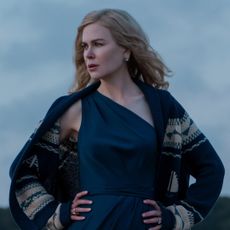 'The Perfect Couple' Ending Explained: Breaking Down Who Killed Merritt
'The Perfect Couple' Ending Explained: Breaking Down Who Killed MerrittNicole Kidman and Meghann Fahy star in the murder mystery.
By Sadie Bell Published
-
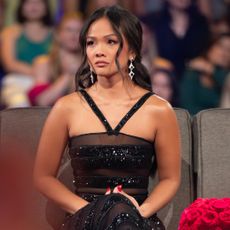 What Happened on 'The Bachelorette' Finale: Here's What to Know About How Jenn Tran's Season Ended
What Happened on 'The Bachelorette' Finale: Here's What to Know About How Jenn Tran's Season EndedThe drama between Jenn, Devin, and Maria has made Bachelor Nation furious... at the producers.
By Quinci LeGardye Last updated
-
 'Kaos' Season 2: Everything We Know
'Kaos' Season 2: Everything We KnowThe Greek mythology-inspired series sets up a truly epic second installment.
By Quinci LeGardye Published
-
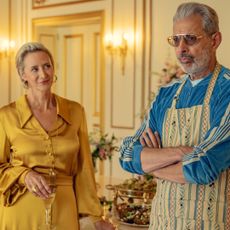 Your Guide to the Cast of Netflix's 'Kaos'
Your Guide to the Cast of Netflix's 'Kaos'The gods are real, and Jeff Goldblum is the king of them all.
By Quinci LeGardye Last updated
-
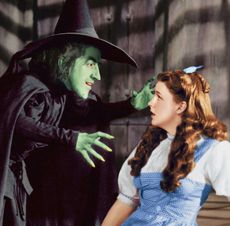 The Best Movies That Didn't Win "Best Picture" at the Oscars
The Best Movies That Didn't Win "Best Picture" at the OscarsTalk about snubs.
By Katherine J. Igoe Published
-
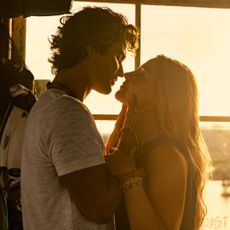 'Outer Banks' Season 4: Everything We Know
'Outer Banks' Season 4: Everything We KnowHere's everything we know about the action-packed teen series' return.
By Quinci LeGardye Published